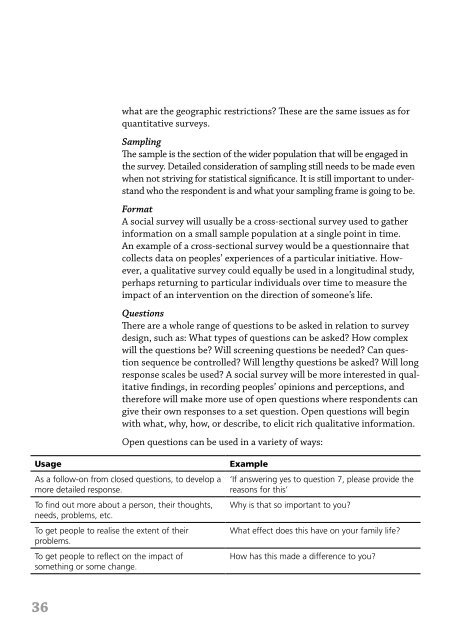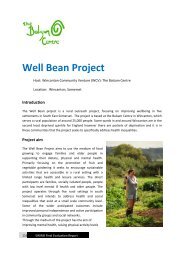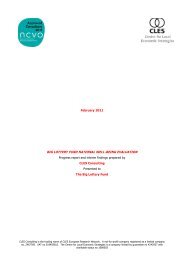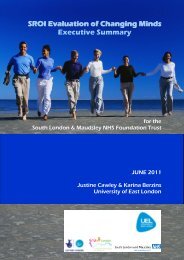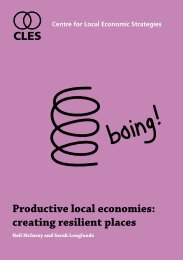Research Methods Handbook.pdf - CLES
Research Methods Handbook.pdf - CLES
Research Methods Handbook.pdf - CLES
You also want an ePaper? Increase the reach of your titles
YUMPU automatically turns print PDFs into web optimized ePapers that Google loves.
Usagewhat are the geographic restrictions? These are the same issues as forquantitative surveys.SamplingThe sample is the section of the wider population that will be engaged inthe survey. Detailed consideration of sampling still needs to be made evenwhen not striving for statistical significance. It is still important to understandwho the respondent is and what your sampling frame is going to be.FormatA social survey will usually be a cross-sectional survey used to gatherinformation on a small sample population at a single point in time.An example of a cross-sectional survey would be a questionnaire thatcollects data on peoples’ experiences of a particular initiative. However,a qualitative survey could equally be used in a longitudinal study,perhaps returning to particular individuals over time to measure theimpact of an intervention on the direction of someone’s life.QuestionsThere are a whole range of questions to be asked in relation to surveydesign, such as: What types of questions can be asked? How complexwill the questions be? Will screening questions be needed? Can questionsequence be controlled? Will lengthy questions be asked? Will longresponse scales be used? A social survey will be more interested in qualitativefindings, in recording peoples’ opinions and perceptions, andtherefore will make more use of open questions where respondents cangive their own responses to a set question. Open questions will beginwith what, why, how, or describe, to elicit rich qualitative information.Open questions can be used in a variety of ways:As a follow-on from closed questions, to develop amore detailed response.To find out more about a person, their thoughts,needs, problems, etc.To get people to realise the extent of theirproblems.To get people to reflect on the impact ofsomething or some change.Example‘If answering yes to question 7, please provide thereasons for this’Why is that so important to you?What effect does this have on your family life?How has this made a difference to you?AdministrationThe costs, required facilities, time, and personnel needed to conduct aneffective survey are often underestimated, even when it is not on a largescale. There should be an administrative system in place to deal with thequestionnaires for when they are returned/completed. This may includenumbering the questionnaires, recording what action has been takenwith them, entering the results into a spreadsheet/database etc.How should it be used?Surveys can be carried out by phone, post, email, website or face-toface,for detailed pros and cons of these delivery methods see the earliersection on qualitative surveys. In collecting rich qualitative surveydata, the most effective method would be via face to face, administeredsurveys, as the researcher would be able to use prompts to encouragepeople to give more detailed answers. This does however introduce abias, which needs to be understood and controlled as much as possible,i.e. by using standard prompts. In qualitative surveys, it is necessarythat the interviewer conduct the interview with total objectivity, sothat respondents are not influenced by any outside source in theirresponses. For this reason, interviews should be conducted by welltrainedand qualified interviewers.What is the output?The data that a social survey can produce is very much dependent onhow the questionnaire is constructed. However, the data can be veryuseful for providing an overall picture of the way in which a project orprogramme is being implemented and how effectively it is impactingupon its target audience. Qualitative data output will be in a text, audioor picture format, and each answer may be very different from another.This can make collection of data more difficult, and a way of collatingdata needs to be considered early in the process.How should it be analysed?The Quantification of Qualitative Survey DataSurveys can be analysed by collating the frequency of responses to eachof the questions on the survey form. This can be done manually using a36 37


